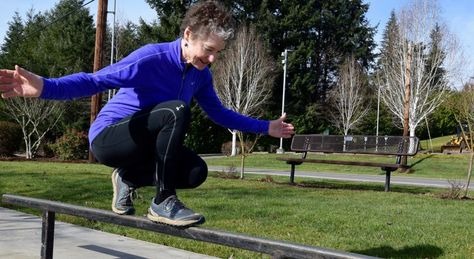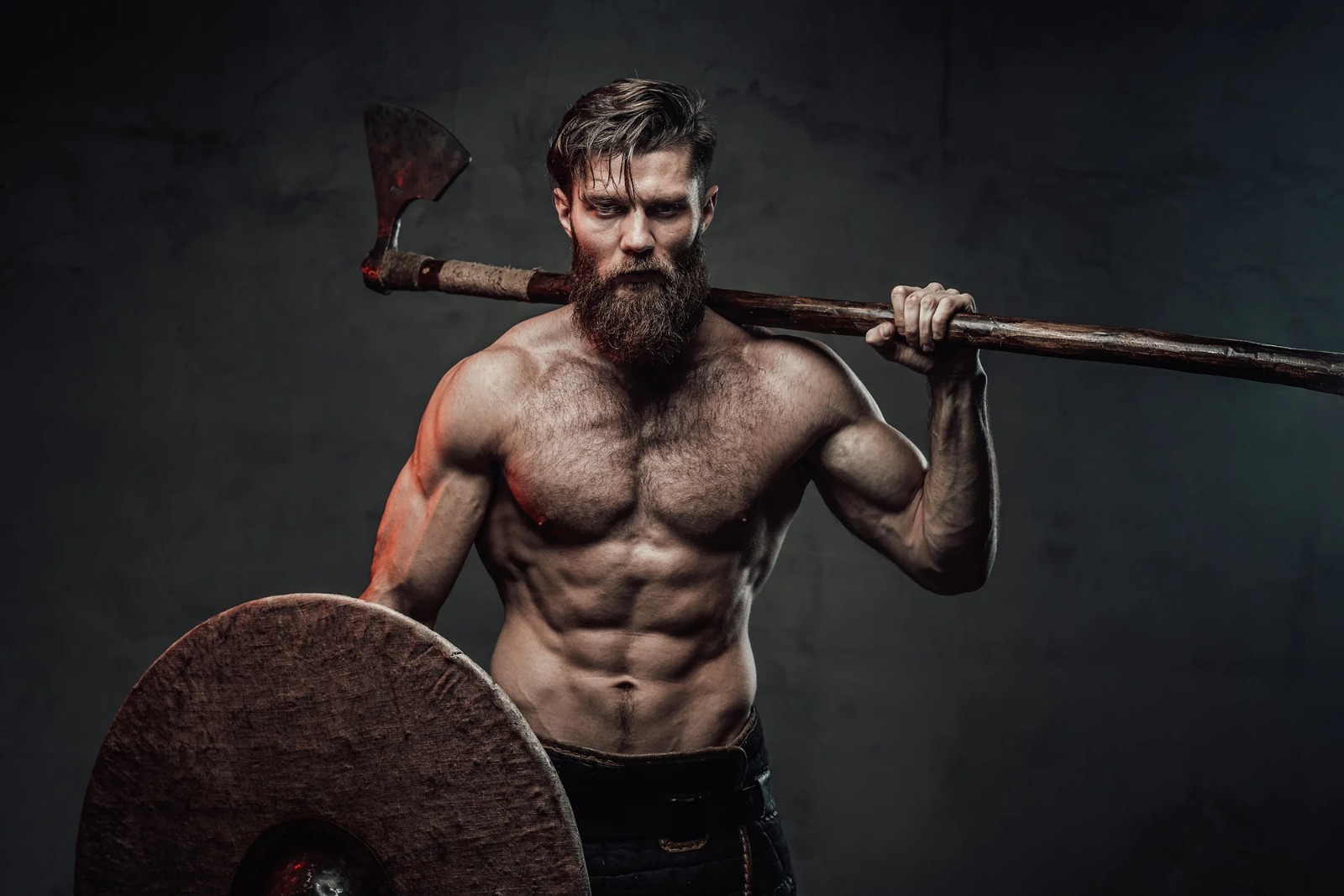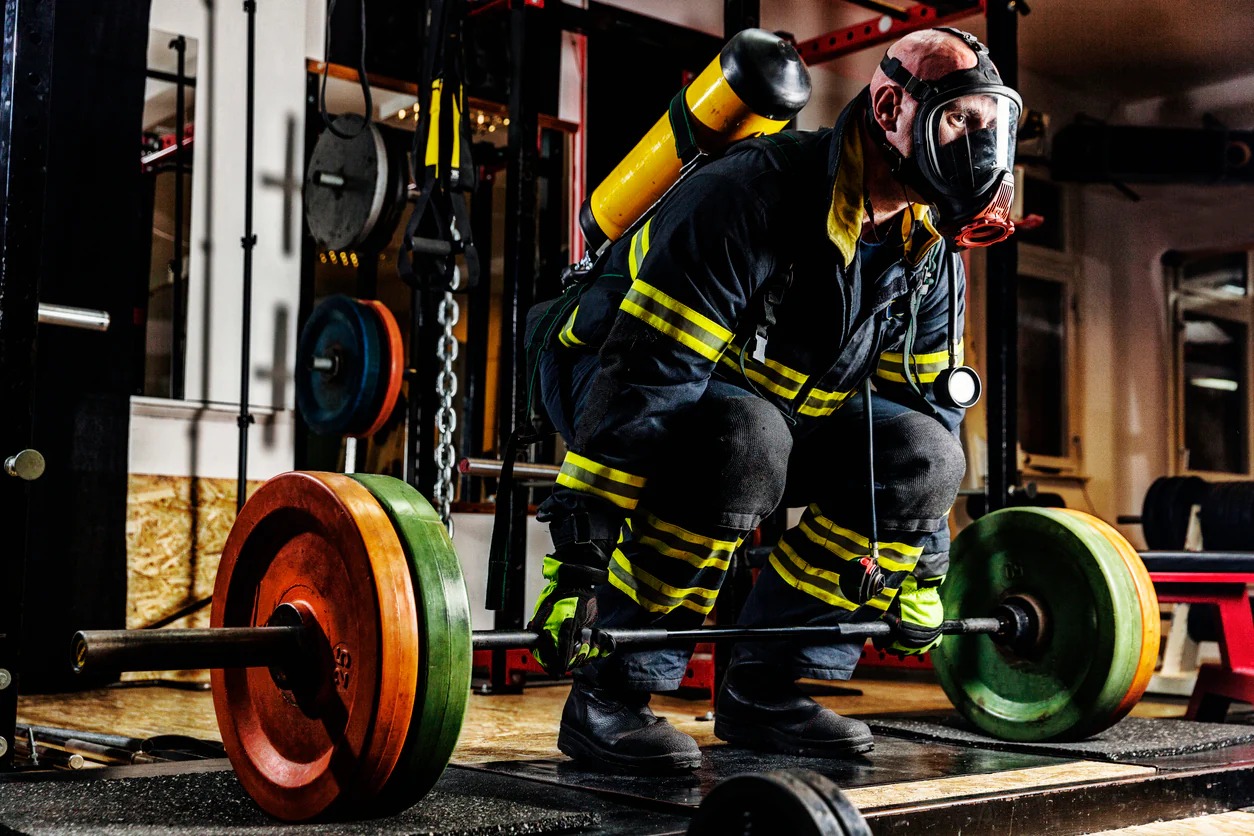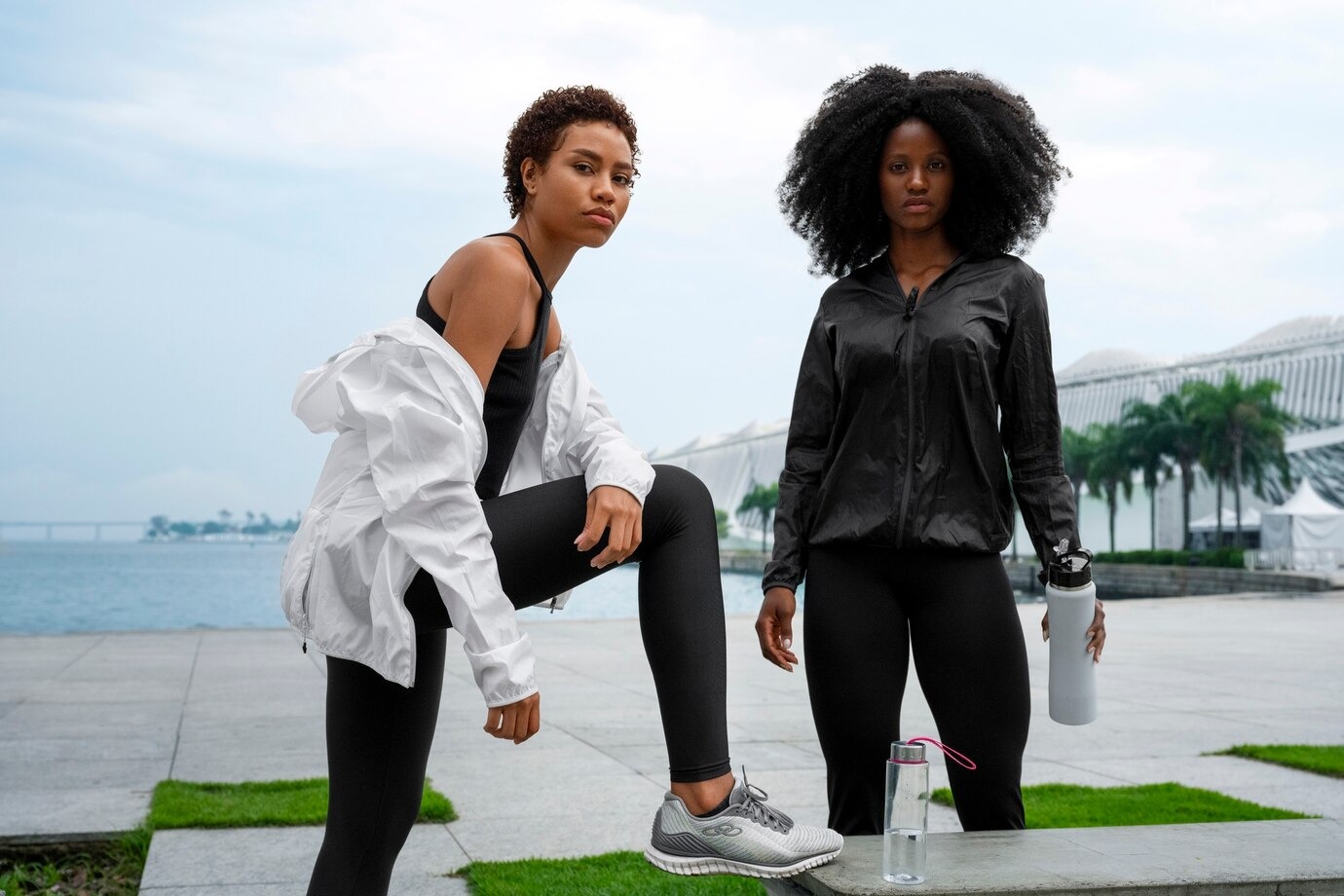
Parkour for Seniors – Is It Possible to Train Balance Safely?
Parkour, often seen as a high-flying sport for the young, can be thoughtfully adapted for seniors to safely improve balance, strength, coordination, and confidence. By focusing on controlled, functional movements and progressive challenges, older adults can regain mobility, reduce fall risk, and enjoy playful, engaging exercise that enhances both physical and cognitive well-being in everyday life.
💪 Fitness Guru
59 min read · 10, Oct 2025

Introduction: Parkour Reimagined for the Golden Years
When most people think of parkour, they imagine young, athletic individuals running up walls, leaping between rooftops, and performing gravity-defying stunts. But at its core, parkour is not about daredevil tricks—it’s about controlled, efficient movement through one’s environment. It emphasizes agility, balance, coordination, and adaptability—skills that become even more crucial with age.
As people age, mobility often declines, and fear of falling increases. Traditional fitness programs for seniors focus on low-impact exercises like yoga, tai chi, or walking. While beneficial, these activities don’t always train the mind-body adaptability needed for real-life balance recovery. That’s where “Senior Parkour” comes in—a growing trend redefining how we view aging and physical capability.
This article delves deep into how parkour can be safely adapted for seniors, its scientific benefits, potential risks, practical training methods, and inspiring examples from around the world.
1. Understanding Parkour: The Philosophy Behind the Movement
Parkour originated in France in the late 1980s, developed by David Belle and inspired by military obstacle training. Its philosophy is based on the “art of movement”—moving efficiently from one point to another using only the body and the environment. It values functional strength, balance, spatial awareness, and mental resilience.
The misconception is that parkour is only about jumping between rooftops or scaling walls. In reality, it can be practiced in small, controlled spaces—using curbs, benches, or even living room furniture. The goal is not competition but personal mastery over movement.
For seniors, this mindset shift is essential. Parkour isn’t about showing off; it’s about regaining confidence in one’s ability to move safely through everyday environments.
2. Why Parkour Makes Sense for Seniors
As people age, the risk of falls becomes a leading cause of injury and loss of independence. The World Health Organization (WHO) estimates that one in three adults over 65 experiences a fall each year. Many of these incidents occur not because of weakness, but due to poor balance and slow reaction times.
Parkour training directly addresses these issues:
- Improves Balance and Stability:
- Seniors learn how to stabilize their bodies on uneven surfaces or during movement transitions, just like navigating curbs or uneven ground outdoors.
- Enhances Proprioception:
- Parkour teaches awareness of how the body moves in space, reducing the likelihood of missteps.
- Strengthens Functional Muscles:
- Movements such as squatting, stepping up, and crawling strengthen muscles used in daily life.
- Boosts Mental Resilience:
- Overcoming small physical challenges fosters confidence and reduces fear of falling.
- Encourages Playfulness and Joy:
- Parkour is inherently fun—it reintroduces a sense of play, exploration, and achievement.
For seniors, this combination of physical and psychological benefits can be transformative.
3. Safety First: Adapting Parkour for Older Bodies
Safety is the cornerstone of senior parkour. The goal is to build confidence, not push limits. Every movement must be adapted to individual ability.
Here’s how parkour can be modified for older adults:
A. The Environment
- Start indoors or in a soft, open space with padded flooring or grass.
- Use stable objects like low benches, rails, or even furniture.
- Avoid heights, slippery surfaces, or unstable structures.
B. Movement Adaptation
- Stepping and Balancing:
- Practice walking along a line, a narrow curb, or balance beam at floor level.
- Controlled Squats and Stands:
- Use support while lowering to and rising from low surfaces—mimicking real-world sitting and standing.
- Rolling and Falling Techniques:
- Learn gentle rolling on mats to reduce fear and minimize injury in case of a fall.
- Vaulting Variations:
- Instead of jumping, seniors can practice leaning over a low surface and shifting weight safely.
- Climbing and Descending:
- Small steps, controlled climbs on stable structures, or stair work build leg strength.
C. Progression
Parkour should be taught in progressive stages, starting with small, slow movements and gradually adding complexity. The key principle: move safely before moving fast.
D. Professional Guidance
Engaging a certified parkour instructor experienced in senior fitness or a physiotherapist ensures the training remains within safe physical limits.
4. Scientific Backing: The Neurological and Physical Benefits
Modern research strongly supports movement-based balance training for seniors. While studies on “senior parkour” are limited, related fields like functional movement therapy, tai chi, and dynamic balance training provide solid evidence for its benefits.
- Neuroplasticity:
- Learning new movement patterns stimulates the brain, improving cognitive flexibility and reducing age-related decline.
- Vestibular and Proprioceptive Training:
- Parkour challenges the inner ear (balance) system and body awareness sensors, enhancing overall stability.
- Musculoskeletal Strength:
- Movements like squatting, stepping, and crawling engage multiple muscle groups and improve bone density through load-bearing activity.
- Confidence and Fall Prevention:
- Studies show that older adults who engage in varied, functional movement programs are less likely to fear falling—and thus less likely to fall.
In essence, the human brain and body are built for movement adaptation, regardless of age. Parkour, when scaled appropriately, taps directly into this capacity.
5. Psychological Empowerment: Rediscovering Freedom
Beyond physical benefits, parkour gives seniors something intangible but vital: self-trust.
Aging often brings a loss of independence, with many seniors feeling fragile or restricted. Parkour changes that narrative. When a 70-year-old learns to balance on a beam or step over a bench with confidence, it restores a sense of autonomy and pride.
Moreover, parkour encourages creative problem-solving. Each environment becomes a playground of possibilities—“How can I move through this space safely and efficiently?” This mindset nurtures curiosity and joy, combating depression and isolation common in older age.
6. Examples from Around the World
Parkour for seniors isn’t just theoretical—it’s already happening.
- Sweden: “Gerontoparkour” classes combine physiotherapy principles with parkour basics. Participants report improved confidence and mobility.
- Japan: Senior citizens in Tokyo parks use benches and railings for balance drills, turning daily walks into dynamic movement routines.
- United Kingdom: A community project called Silver Parkour trains seniors using adapted obstacle courses, helping participants recover from hip injuries and gain mental resilience.
- United States: Organizations like Adaptive Movement Parkour offer workshops for older adults, blending yoga, strength training, and parkour elements.
These programs prove that age is no barrier to movement innovation.
7. Getting Started: A Beginner’s Framework for Senior Parkour
For seniors interested in trying parkour, the best approach is gradual and mindful. Below is a practical roadmap:
Step 1: Medical Clearance
Always consult a healthcare provider, especially for those with joint issues, osteoporosis, or cardiovascular concerns.
Step 2: Warm-Up
Begin with joint mobility exercises—neck rolls, ankle circles, shoulder rotations, and gentle dynamic stretches.
Step 3: Basic Movements
- Balance drills on one foot or low objects.
- Step-ups on stairs or low benches.
- Gentle crawling or squatting for coordination.
- Sideways walking and slow turns for stability.
Step 4: Integration into Daily Life
Turn everyday environments into safe practice zones—balancing while brushing teeth, stepping over small obstacles, or squatting to pick things up safely.
Step 5: Join a Community
Group classes foster motivation and reduce isolation. Sharing progress builds a sense of achievement and belonging.
8. Addressing Common Concerns
“Isn’t Parkour Too Dangerous for Seniors?”
Not when adapted. The focus isn’t on jumps or flips but on controlled, functional movements. Risks are comparable to any low-impact fitness class.
“What if I Have Limited Mobility?”
Parkour starts where you are. Even learning to shift weight safely or balance on one leg can be a meaningful first step.
“Do I Need Equipment?”
No special gear is required. Comfortable shoes, supportive flooring, and a stable environment are enough.
“Can Parkour Replace Physiotherapy?”
No—but it can complement it. Many physiotherapists now integrate parkour-inspired drills into rehabilitation programs.
9. Challenges and Limitations
While parkour for seniors offers great promise, there are challenges:
- Physical Barriers: Chronic pain, arthritis, or mobility issues may limit certain movements.
- Access to Instructors: Certified coaches experienced with seniors are still rare.
- Fear and Social Stigma: Many older adults hesitate due to misconceptions about parkour being extreme.
- Insurance and Liability Issues: Some fitness centers may be reluctant to host such programs due to perceived risks.
Addressing these challenges requires public education, professional training programs, and supportive community infrastructure.
10. The Future of Senior Parkour
The future of senior fitness lies in functional movement education, not machines or static exercises. As societies age, innovative methods like parkour will redefine what “aging well” looks like.
Imagine parks equipped with senior-friendly obstacle zones, physiotherapists collaborating with traceurs (parkour practitioners), and intergenerational parkour clubs bridging age gaps through movement.
The philosophy is simple: We don’t stop moving because we grow old; we grow old because we stop moving.
Parkour, often viewed as the province of daring youth leaping across rooftops and vaulting over urban obstacles, is increasingly being explored as a viable method for seniors to train balance, strength, and confidence, and while this may seem counterintuitive, it aligns perfectly with the fundamental principles of movement efficiency and adaptability that are crucial at any age. The philosophy of parkour centers not on spectacle but on the mastery of navigating one’s environment with control, precision, and awareness, which is especially valuable for older adults who face natural declines in mobility, coordination, and muscular strength as they age; traditional senior fitness routines, while beneficial for cardiovascular health and flexibility, often lack the dynamic, problem-solving components inherent in parkour, meaning that seniors may not be adequately prepared to respond to real-life balance challenges such as uneven sidewalks, sudden trips, or navigating crowded spaces. At its core, senior-adapted parkour emphasizes functional movement—learning to step, reach, balance, and shift weight safely and efficiently—while deliberately avoiding the high-risk stunts that characterize competitive parkour. This practice offers multiple physiological benefits, starting with proprioception, the body’s innate awareness of its position in space, which declines with age and contributes to falls; parkour exercises challenge the body to sense shifts in weight and maintain equilibrium, which, over time, strengthens neural pathways and improves reflexive reactions to destabilizing forces. Additionally, movements like stepping onto low platforms, gentle vaulting over soft obstacles, or squatting and rising from floor-level surfaces activate the major lower-body and core muscle groups necessary for daily activities, from climbing stairs to bending to pick up objects, thereby improving muscular endurance and joint stability. Importantly, these exercises also engage the vestibular system, which governs balance, coordination, and spatial orientation, allowing seniors to regain confidence in navigating variable terrains without excessive reliance on assistive devices. Beyond the physical benefits, parkour provides significant psychological advantages: the process of setting small, achievable movement challenges and mastering them fosters self-efficacy, reduces fear of falling, and revitalizes the sense of autonomy that often diminishes in older adults, while the playful, creative elements of problem-solving routes through one’s environment stimulate cognitive function, attention, and spatial reasoning. Safety is paramount in senior parkour, requiring modifications such as practicing in padded or grassy environments, using stable supports like rails and benches, and progressing gradually from simple balance exercises to slightly more complex movement sequences; movements should be performed slowly and deliberately at first, emphasizing correct form and body awareness rather than speed or distance, and professional guidance from certified instructors or physiotherapists can ensure that exercises are adapted to individual health conditions, including arthritis, osteoporosis, or cardiovascular limitations. Warm-ups and mobility exercises play a crucial role in preparing joints and muscles, while cool-down stretches maintain flexibility and reduce post-activity soreness, making the practice sustainable and enjoyable. The growing body of research on functional balance training, dynamic movement, and neuroplasticity supports the concept that learning new motor skills, as in senior parkour, enhances both brain and body adaptability, improving cognitive flexibility, reaction times, and coordination, and even promoting mental resilience and emotional well-being; studies show that older adults who engage in multi-dimensional movement routines experience a reduced risk of falls, improved self-confidence, and better overall quality of life. Globally, examples of seniors practicing modified parkour are emerging: programs in Sweden and Japan incorporate obstacle-based balance drills into everyday senior fitness routines, community projects in the United Kingdom design safe, low-level parkour courses for older participants, and organizations in the United States integrate parkour-inspired mobility exercises into rehabilitation and preventive programs, illustrating that age is no barrier to adopting this dynamic philosophy of movement. Senior parkour also addresses common fears and misconceptions, demonstrating that one does not need to leap over walls to benefit from parkour principles; even simple exercises such as balancing on a line, stepping over low objects, or performing gentle rolls and controlled descents can significantly enhance balance, functional strength, and confidence. The approach is inherently progressive, beginning with minimal challenge and gradually increasing complexity as the participant’s capability improves, while simultaneously cultivating an awareness of the body-environment interaction that is often underdeveloped in conventional fitness routines for older adults. Furthermore, integrating parkour into daily life—practicing weight shifts while walking, stepping carefully over small obstacles, or using benches for controlled squats—reinforces functional movement skills in real-world contexts, reducing the gap between exercise and daily living challenges. Senior parkour does not replace other fitness methods such as yoga, tai chi, or walking but complements them by introducing dynamic, problem-solving movement, thereby creating a more holistic fitness regimen that targets both the mind and body. While challenges exist, including limited access to instructors, physical barriers, and social stigma around the perceived danger of parkour, these can be mitigated through public education, supportive environments, and careful program design. By reframing movement as playful, purposeful, and adaptable, seniors can rediscover joy in physical activity, improve fall resistance, and enhance cognitive and emotional well-being, ultimately challenging societal notions that aging equals fragility and proving that functional, balanced movement can—and should—be pursued at any age. In conclusion, parkour for seniors represents a transformative approach to aging, emphasizing safety, adaptability, and empowerment; it allows older adults to engage in dynamic movement that strengthens muscles, sharpens reflexes, enhances balance, and cultivates confidence while maintaining enjoyment and creativity in their physical activity, providing a compelling alternative to traditional senior exercise programs. With gradual progression, environmental adaptation, professional guidance, and a focus on functional mastery rather than spectacle, seniors can safely embrace parkour principles, demonstrating that agility, strength, and movement literacy are not solely the domain of youth, and that thoughtful, mindful practice can significantly enhance quality of life, independence, and overall physical and mental health, making parkour a unique and highly effective tool in the pursuit of longevity and active aging.
Parkour, often perceived as an extreme sport dominated by youthful agility and daring feats of leaping across rooftops and vaulting over urban obstacles, is increasingly being recognized for its potential benefits for seniors when adapted safely and thoughtfully, because at its core, parkour is not about spectacle but about efficient, controlled movement through one’s environment, emphasizing balance, coordination, spatial awareness, and functional strength—all of which are essential for older adults seeking to maintain independence and reduce the risk of falls, which are among the leading causes of injury and hospitalization in people over the age of 65; as aging naturally brings changes such as reduced muscle mass, slower reflexes, diminished proprioception, and sometimes fear of falling, traditional fitness programs like walking, yoga, or light resistance training, while beneficial for cardiovascular health and flexibility, may not sufficiently challenge the body’s ability to respond dynamically to unexpected changes in terrain or movement demands, which is precisely where parkour-inspired training can fill an important gap by teaching seniors to navigate everyday obstacles with confidence, control, and safety, focusing on movements like balance walking along lines or low rails, gentle step-ups onto stable platforms, controlled squats and descents, and low-impact vaults over soft or supportive objects; the practice engages multiple muscle groups, including the core, legs, and stabilizing muscles, while simultaneously enhancing proprioception—the body’s ability to sense its position in space—and vestibular function, both of which play critical roles in preventing falls and improving overall coordination; moreover, parkour introduces an element of cognitive challenge by requiring practitioners to evaluate the environment, anticipate obstacles, plan movement sequences, and adjust in real time, thereby promoting neuroplasticity, problem-solving skills, and mental sharpness, which are often under-stimulated in conventional senior exercise routines; safety, however, is paramount, and parkour for seniors must be approached with careful modifications, such as beginning in padded indoor spaces or on grassy outdoor areas, using stable, low-height supports like benches, rails, or curbs, and gradually progressing from simple static balance exercises to more dynamic movements, all performed under supervision or with guidance from trained instructors who understand the physiological limitations of older adults, and incorporating proper warm-ups, mobility drills, and cool-down stretches to protect joints and muscles from strain; beyond the physical and cognitive benefits, senior-adapted parkour fosters psychological empowerment by instilling confidence, reducing fear of falling, and encouraging a playful approach to movement, allowing older adults to reconnect with the joy of motion and regain a sense of independence that can often be diminished by aging; this form of exercise also addresses common concerns such as arthritis or joint pain by emphasizing low-impact, controlled movements, which can be adapted to each individual’s abilities, ensuring accessibility for a wide range of fitness levels and health conditions; globally, examples of senior-friendly parkour programs are emerging, demonstrating that age is not a barrier to embracing this form of functional fitness: in Sweden, specialized “gerontoparkour” classes integrate balance drills and obstacle navigation into senior exercise routines; in Japan, older adults utilize benches, low walls, and park railings to practice stepping, balancing, and controlled vaults; community programs in the United Kingdom, like Silver Parkour, create safe, low-level obstacle courses for older participants, while organizations in the United States combine parkour-inspired exercises with rehabilitation and preventive programs to improve balance, mobility, and confidence in seniors recovering from injuries or seeking proactive fall prevention; these initiatives reveal that when parkour is reinterpreted for older adults, it transcends its reputation as a risky, high-energy sport and becomes a practical, enjoyable method of training for real-world movement challenges, offering measurable physical, cognitive, and emotional benefits; from a physiological standpoint, the combination of strength, balance, and agility training inherent in parkour contributes to improved muscle endurance, joint stability, and cardiovascular health, while the constant environmental engagement—navigating uneven surfaces, stepping over obstacles, or adjusting body position in confined spaces—enhances functional fitness in ways that traditional, static exercise routines cannot fully replicate, and because parkour encourages incremental progression and mastery over increasingly complex movement sequences, it simultaneously promotes mental resilience, adaptability, and a sense of accomplishment, all of which are crucial for maintaining quality of life and independence in later years; furthermore, integrating parkour principles into daily life, such as practicing safe stepping, weight shifting, and controlled squatting during household activities, ensures that the benefits extend beyond formal training sessions and directly improve the ability to perform essential activities of daily living, ultimately reducing fall risk, enhancing mobility, and increasing confidence in navigating public spaces; while challenges remain—including access to trained instructors, social stigma surrounding perceptions of danger, and the need for supportive, safe environments—these obstacles can be addressed through community education, structured programs, and carefully designed training spaces that prioritize senior safety and engagement; importantly, the emphasis on mindful movement, gradual skill progression, and functional application differentiates senior parkour from traditional parkour, making it an empowering, adaptive, and sustainable approach to fitness that supports both physical and cognitive well-being; the psychological impact of successfully completing movement challenges, even small ones like balancing on a curb or stepping onto a low platform, cannot be overstated, as it directly combats fear, builds self-efficacy, and encourages continued participation in physical activity, which in turn contributes to improved mental health, reduced anxiety, and a more active, independent lifestyle; ultimately, parkour for seniors represents a paradigm shift in how society views aging and physical capability, demonstrating that movement literacy, agility, and confidence are not exclusive to youth but can be cultivated safely at any stage of life; by combining physical conditioning, cognitive engagement, environmental awareness, and a playful, exploratory approach to movement, seniors can achieve improved balance, coordination, and strength, enhanced mental sharpness, and renewed confidence in their ability to navigate complex environments, all while enjoying a sense of fun, creativity, and accomplishment that traditional exercise routines often fail to provide, making senior-adapted parkour a uniquely holistic, effective, and inspiring method of promoting longevity, independence, and overall well-being in older adulthood.
Conclusion
Parkour for seniors may sound unconventional, but its principles of balance, adaptability, and mindful movement align perfectly with the needs of aging adults. When adapted for safety, it strengthens muscles, enhances coordination, and builds confidence in navigating real-world environments.
This approach is not about leaping over walls—it’s about reclaiming trust in one’s body and defying the stereotype that aging equals fragility. With professional guidance and community support, parkour could become a cornerstone of preventive senior health and joyful movement.
Q&A Section
Q1: What is “Senior Parkour”?
Ans: Senior Parkour is an adapted form of parkour that focuses on safe, controlled movements designed to improve balance, strength, and coordination in older adults. It eliminates risky stunts and emphasizes functional, everyday mobility.
Q2: Is parkour safe for seniors with joint problems or arthritis?
Ans: Yes, if done under supervision and with modified movements. Low-impact drills, stretching, and gradual progression reduce strain and actually help improve joint flexibility and stability.
Q3: Do seniors need any special equipment for parkour?
Ans: No. Comfortable clothing, supportive shoes, and a safe practice environment—like a park or padded floor—are sufficient.
Q4: How does parkour help prevent falls in older adults?
Ans: It strengthens leg and core muscles, improves reflexes, and enhances spatial awareness, making seniors more responsive and stable during unexpected movements or slips.
Q5: Can beginners learn parkour without a coach?
Ans: Yes, but professional guidance ensures safety and proper progression. Many exercises, such as balance drills and step-ups, can also be self-practiced at home with caution.
Similar Articles
Find more relatable content in similar Articles

Parkour for Seniors – Is It Possible to Train Balance Safely..
Parkour, often seen as a high-.. Read More

Viking Fitness: Old Norse Training Methods for Modern Athlet..
Discover the ancient training .. Read More

Firefighter Fitness – Training to Carry 50 Kg of Gear...
Firefighter fitness is a speci.. Read More

Fitness Meets Fashion – Wearable Gear That Looks Like Street..
Wearable gear is transforming .. Read More
© 2024 Copyrights by rFitness. All Rights Reserved.